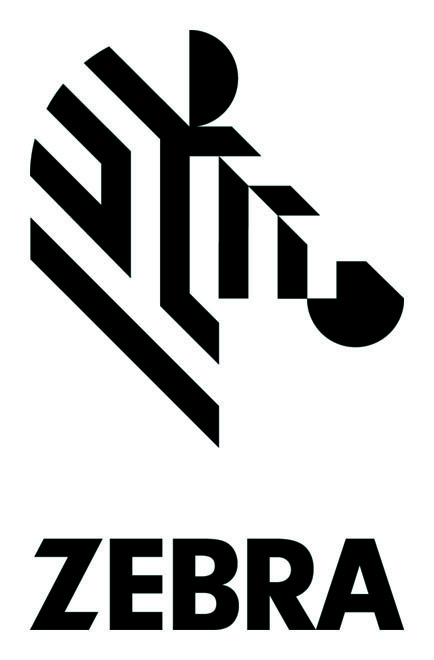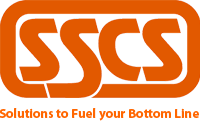The SSCS Interview: Rob Armstrong of Zebra Technologies (Part 2)
Maintaining a Mobile Competitive Edge
Part 1 of this interview can be found here. We recommend you read it before proceding with this post.
SSCS: We left off last week talking about how the mobile user interface is evolving. What are some of the elements that go into that?
RA: One factor driving the evolution of UI is the demand for flexibility in regards to how the user is allowed to input information into the device. They want more options, whether they are additional sensors, multi-touch user interfaces on dual-mode resistive (a more rugged screen usually found in restaurant, factories, and hospitals) and capacitive (the kind of technology used in smartphones and consumer tablets) touch screens, different keypad options (or none at all) or even the continued use of styluses.
 Another driver is how the user interface plays a role in rendering out information: brighter displays or increased reliance on graphical elements. So the user wants plenty of options when it comes to getting information in and out of the device, without losing the familiarity of form to which they have become accustomed. The evolution of UI in mobility solutions is occurring simultaneously across all channels.
Another driver is how the user interface plays a role in rendering out information: brighter displays or increased reliance on graphical elements. So the user wants plenty of options when it comes to getting information in and out of the device, without losing the familiarity of form to which they have become accustomed. The evolution of UI in mobility solutions is occurring simultaneously across all channels.
In the C-store it is especially important that the interface be intuitive and easily adopted by the associate so they can be as productive as possible. They might not have a lot of time for training. They aren’t always going to have a manager telling them how to use the device properly. How can mobility drive top line revenue, where even an incremental half percent growth in profitability can be considered significant? That’s the question on everybody’s mind. Making associates more efficient is one of the keys.
SSCS: We’ve talked about the devices, what about the required communication that must go hand in hand with mobility?
RA: These days almost everyone expects to be connected indoors without service interruptions. The C-store market is exploring a number of solutions to ensure this occurs. As a result you’re seeing more and more instances of wireless LANs (WLANs) within the store environment.
Bluetooth low energy (BLE) beacons that can transmit messages or prompts to a user’s mobile device are becoming popular, too, opening up new and profitable vistas for operators such as personalizing the trip for the customer with device-based digital offers based on his or her past purchasing history.
Maintaining a compelling mobile competitive edge is becoming more of a necessity as the C-store channel starts to blend with QSRs and other retail channels. The customer experience is more important than ever, so if the C-store is going to, indeed, compete with the QSR, it must utilize the technology that the QSR has successfully adopted revolving around customer experience.
SSCS: What kind of technology are we talking about?
 RA: Bluetooth beaconing is starting to be explored and piloted by many retailers including QSRs to personalize the customer experience. If a customer sees an offer pop up on his or her mobile device that is germane to past buying patterns, it has an impact. Personalized offers delivered as coupons or QSR codes that are readable at the POS serve as an effective catalyst leading to additional buying behavior.
RA: Bluetooth beaconing is starting to be explored and piloted by many retailers including QSRs to personalize the customer experience. If a customer sees an offer pop up on his or her mobile device that is germane to past buying patterns, it has an impact. Personalized offers delivered as coupons or QSR codes that are readable at the POS serve as an effective catalyst leading to additional buying behavior.
Wireless has the potential to enhance the customer experience in other ways. A customer killing time in the forecourt while the tank fills can access the web or email or the application of his or her choice without any hassles. Better yet, if the C-store has a dining or other seated area, Wi-Fi gives them an excuse to hang around the store a little bit longer. Studies have shown that additional time spent on the premises translates into additional revenue. This is a pretty good example of an enhancement to the customer experience that translates into top line revenue.
Successful C-stores are going to leverage this technology more frequently moving forward; it’s certainly a wave of the future and one we’re invested in as we provide an indoor location solution utilizing beaconing tied to a full value-added marketing platform. In fact, ABI Research® named Zebra one of the top indoor location vendors. Hardware isn’t the key, but the solutions formed around the hardware are critical.
SSCS: Are there any particular challenges involved in bringing your products and services to the C-store market?
RA: The C-store market is an interesting, but very challenging segment for us to do business in because it’s so fragmented. There are still a lot of one-site “Mom and Pop” stores. That makes it difficult for us to find effective channels through which we can enter and own the market from top to bottom. There are markets into which we enter that are easier to permeate meaningfully because they are more centralized—the number of major players is few. Capture them and you capture the channel.
Another challenge, in terms of technology, is that associates in the C-store tend to wear many hats and there aren’t a lot of them onsite at any given time. They need to be available for customers in the front of the store, but still perform some of the back office functionality like shelf labeling or planning where to place products on shelves in order to maximize sales. In many of the markets we serve these are different jobs performed by different people. The unique staffing model of the C-store has to be addressed by similarly unique technology.
We have the solutions, but to sustain success with them it really helps to have long-standing relationships with technology providers, like SSCS, that have established themselves in the space and understand the use cases that are of most utility to their customers. This is the best, most reliable path into the segment. Partners like SSCS are very important to us.
If you liked this edition of the SSCS Interview, you might want to click on the following links:
- The SSCS Intervew: Dr. Chris Gray of Saatchi & Saatchi X
- The SSCS Interview: Noam Kimelman of Fresh Corner Cafe
- The SSCS Interview: Chewy the Parker’s Elf
- The SSCS Interview: Steve Baus of Baus Systems, LLC
- The SSCS Interview:Mark Jordan of Refuel, Inc.
- The SSCS Interview: Mark Johnson of Loyalty360
- The SSCS Interview: Mike Lawshe of Paragon Solutions
- The SSCS Interview: Gray Taylor of Conexxus





Recent Comments